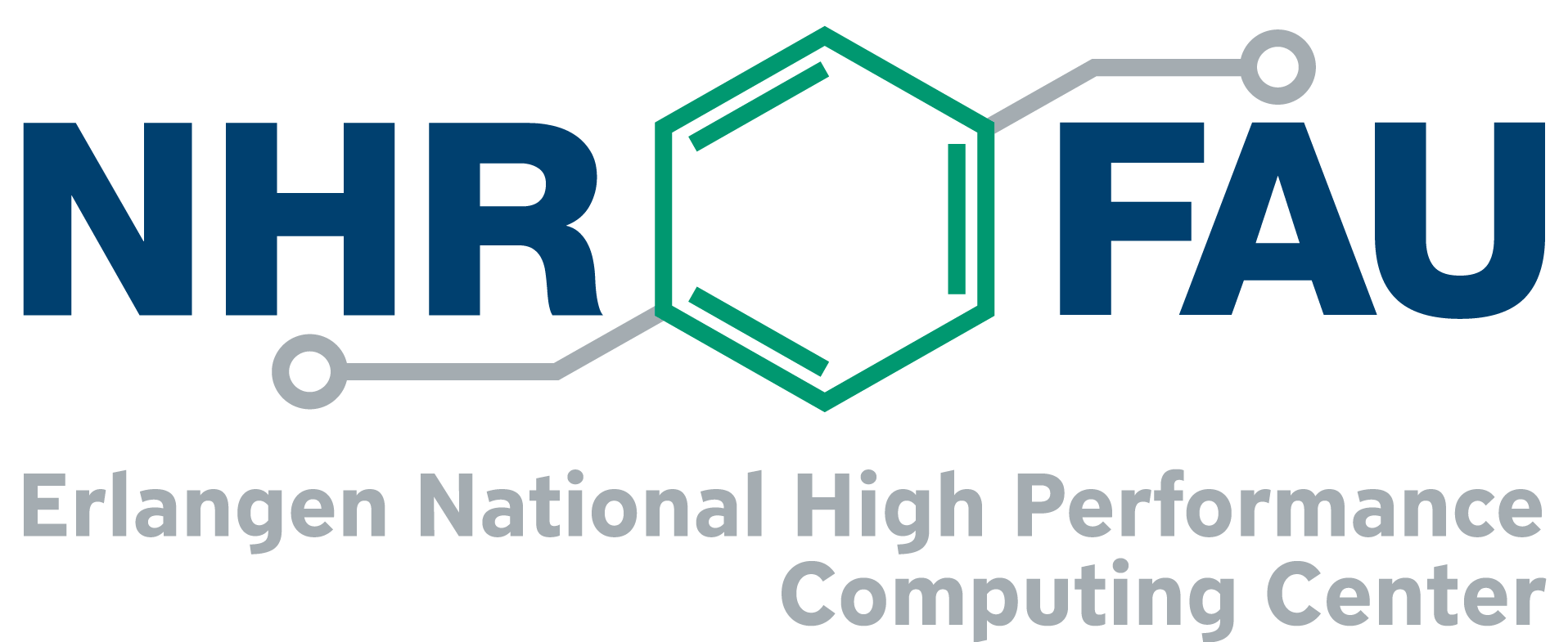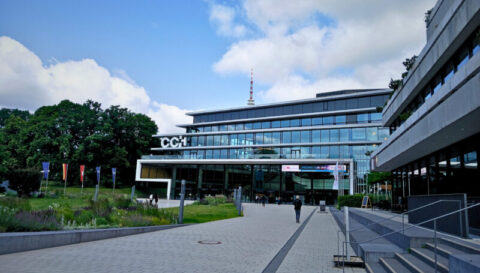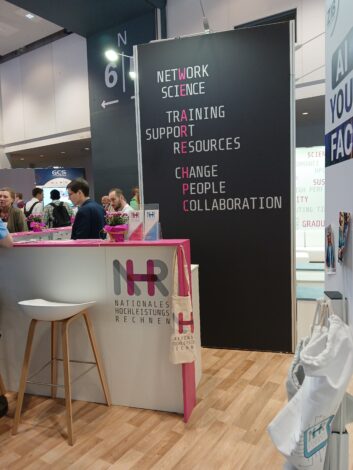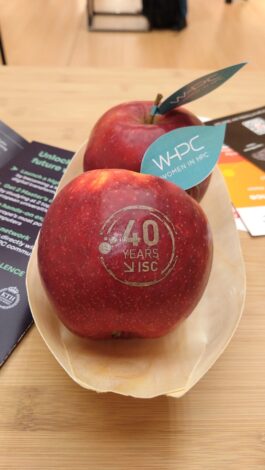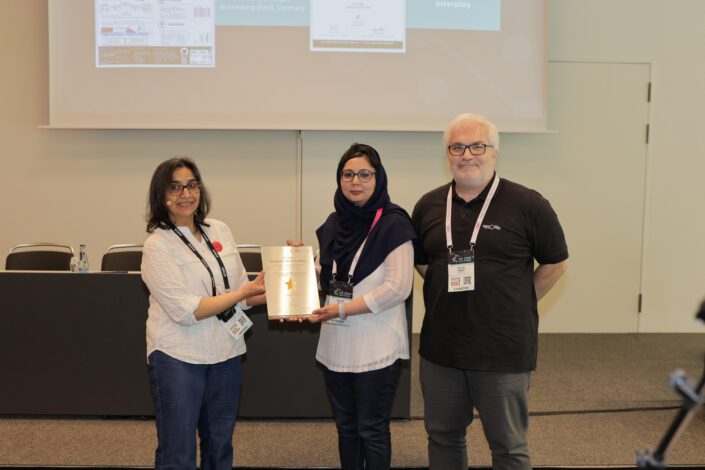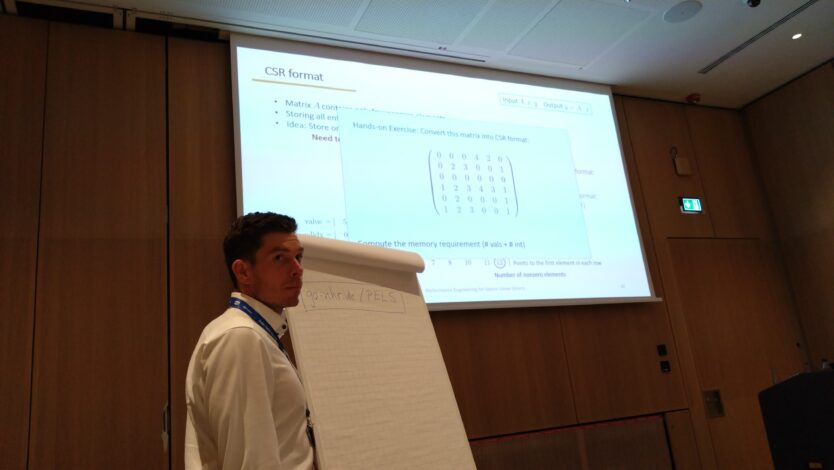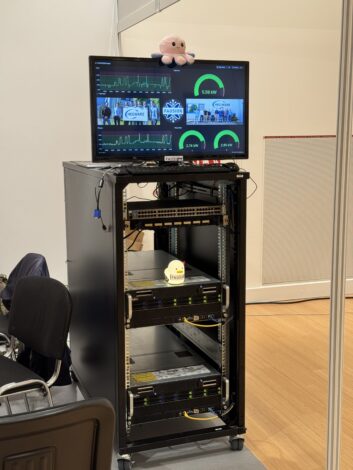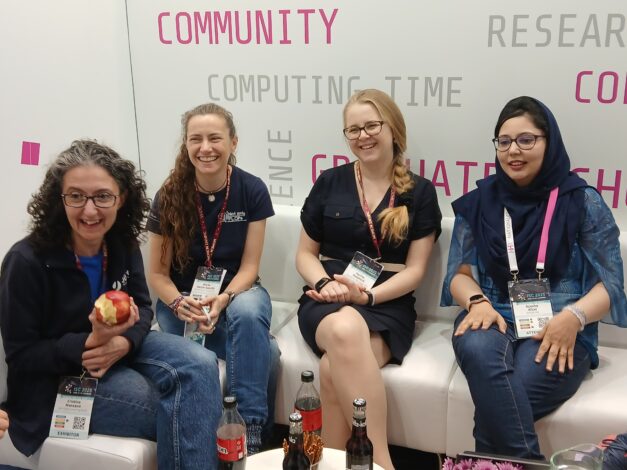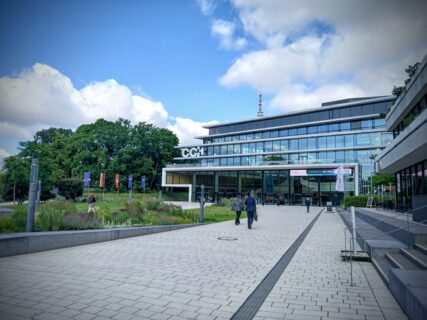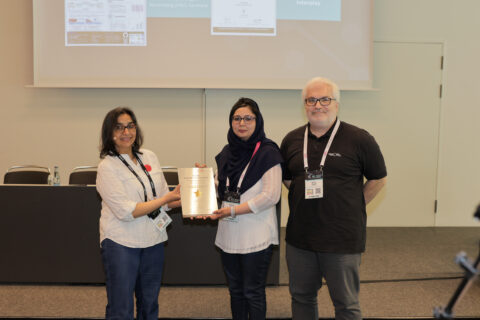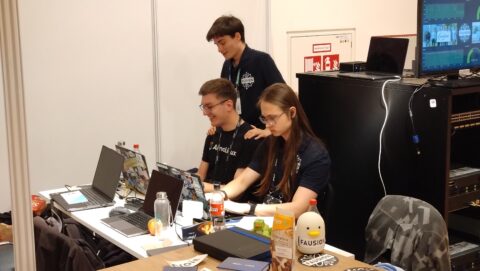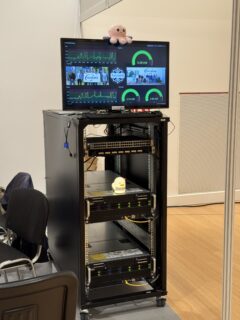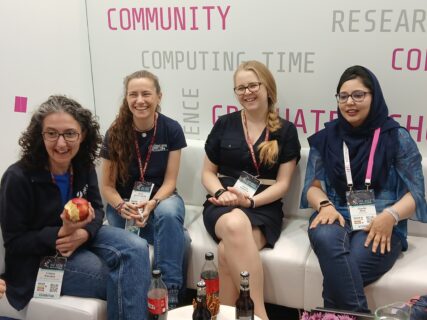ISC High Performance was connecting the dots!
From June 10 to 13, the ISC High Performance conference celebrated its 40th anniversary. The world of HPC met in Hamburg to congratulate—and to advance and promote knowledge exchange, innovation, and collaboration in the field of high-performance computing. ISC’s slogan this year was “Connecting the Dots.” And it did, in more ways than one.
As always, the world-class event included keynotes, a research paper track, extensive poster sessions, a Birds of a Feather (BoF) track, a diverse invited program covering HPC, AI, and Quantum Computing (and various combinations thereof), a vendor program, a Student Cluster Competition (SCC), and an exhibition with the latest and greatest of HPC-related technology.
We a thrilled to announce that NHR@FAU could again make its mark as one of the places to be for HPC:
- PhD student Ayesha Afzal won the Best Poster Award for her research poster “DisCostiC: Digital Twin Performance Simulations Unlocking Hardware-Software Interplay,” in which she shows that it is possible to simulate and investigate performance features of MPI programs without actually running them on real hardware. Ayesha also co-chaired the Women in HPC Poster track and organized the well-attended workshop “Energy Efficiency with Sustainable Performance: Techniques, Tools, and Best Practices.”
- The “FAUSION” team, a collaboration among students from FAU and the Universita della Svizzera italiana (USI) in Lugano, scored third in the ISC25 Student Cluster Competition. A big “Thank You” goes to MEGWARE for providing the cluster hardware and tons of technical support in the preparation phase. The team wants to stay together and is excited to build on this success at future competitions.
- “Helma,” NHR@FAU’s new GPU cluster, hit #51 in the 65th Top500 list, which was revealed on the first day of the conference. It is currently the fastest supercomputer at German universities and ranks third among all German systems on the list. Thanks to its super-efficient NVME-based storage, it could also score third in the worldwide IO500 list of production systems. This makes Helma, which was funded by the State of Bavaria, NHR, FAU, and several Bavarian universities, a first-class platform for AI research and more.
- Together with the other eight NHR centers, NHR@FAU showcased its infrastructure and services as part of the NHR Alliance booth. A series of “Sofa Talks” fostered exchange among the NHR centers and with other interested conference attendees.
- Two tutorials, “Core-Level Performance Engineering” and “Performance Engineering for Sparse Linear Solvers,” were presented by NHR@FAU colleagues and collaborators.
If there is one major conclusion from the conference program, it is the realization that AI, Quantum Computing, and HPC are about to grow together to build and support a new quality of science and research. NHR@FAU is enthusiastic to be part of this transformation.
